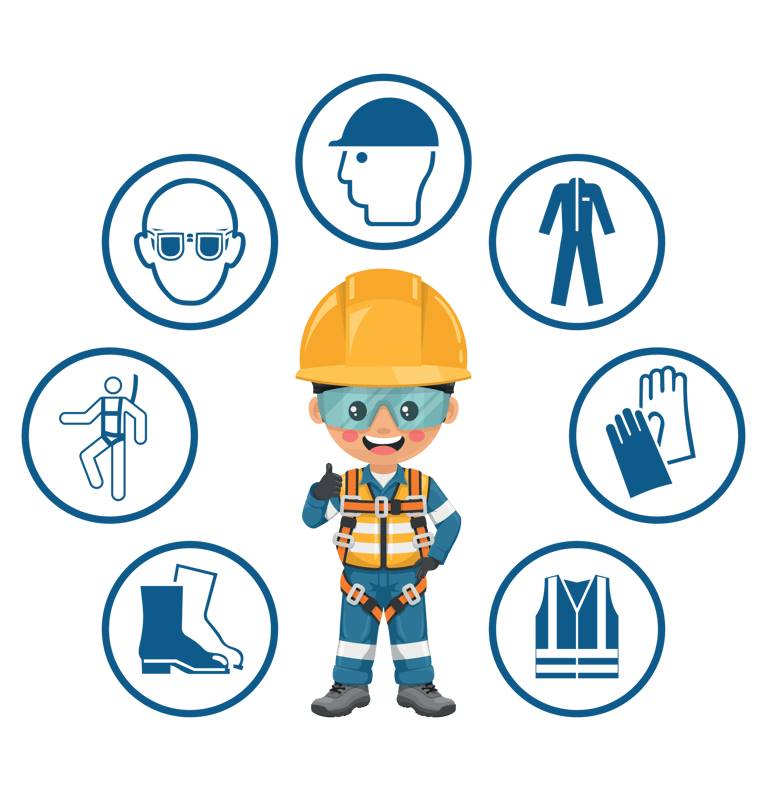
Consultancy

Preparation of Preliminary Risk Analysis


Although many accidents are caused by technology, human error also plays a significant role in the errors recorded in workplace accidents in the country. This often occurs due to the inadequate execution of work processes, which are often not optimized enough to ensure safe and effective operation, compromising the safety of employees.
Personal Protective Equipment (PPE) is extremely important, but unfortunately, some employees are still reluctant to use it for various reasons. Therefore, one of the main objectives of the Preliminary Risk Analysis (PRA) is to raise awareness of all those involved in the work on the importance of precautions and risk prevention, aiming not only at the health of employees, but also at ensuring a quality work routine.
If your company has not yet implemented tools and processes to optimize activities and prevent accidents, it is time to seriously consider this issue. A safe work environment not only reduces the costs associated with accidents, but also significantly increases employee productivity.
TECH-INSP is a reference in the market for offering high quality and efficient services, such as operation, inspection and maintenance of cargo handling accessories, carried out by highly qualified professionals, ready to meet the specific needs of each client.
Preparation of Mitigation and Contingency Plans
Thus, the contingency plan must individually address each of these points, outlining both preventive actions and the necessary steps in case of a disaster. This approach helps minimize negative consequences and financial losses. The plan is also known as a recovery plan or a business continuity plan. Undoubtedly, it is a crucial tool for reducing the risk of operational failure in essential infrastructure components. Whether fully or at least in an acceptable condition, activities must resume as quickly as possible. Therefore, if an issue arises, the contingency plan works to maintain normal operations, preventing disruptions from severely impacting production.
Think about a situation where a process is forcibly interrupted, such as a power outage or a natural disaster. A contingency plan is essential to help restore normal operations. In this way, even when an unexpected event occurs, the resulting damage can be mitigated. This plan can mean the difference between a business succumbing to a true disaster or surviving it.
Of course, there is a cost associated with developing and maintaining a contingency plan within a company. It is the role of risk management to assess whether the cost of this internal control is truly justified in relation to the risks faced.
TECH-INSP is a market leader known for delivering high-quality and efficient services, including operations, inspections, maintenance, and load-lifting operations, among others. These services are carried out by highly skilled professionals, fully prepared to meet the specific needs of each client.
The purpose of a contingency plan is to gather guidelines and information on the actions that an organization should take during an adverse situation. In other words, the document defines training, responses and procedures that need to be adopted in the event of abnormal occurrences. The types of events may vary depending on the characteristics of the company. In general, the actions revolve around the following facts:
Ower or water outages
Fires;
Virtual attacks;
Work accidents;
Explosions;
Robberies;
Floods;
Loss of important documents;
Strikes and work stoppages.



Development of Success Trees and Failure Trees
Fault Tree Analysis (FTA) is a graphical tool used to explore the causes of system-level failures. It applies Boolean logic to combine a series of lower-level events and follows a top-down approach to identify component-level failures (basic events) that lead to system-level failures.
FTA consists of two main elements: "events" and "logic gates", which connect events to determine the root cause of the primary undesired event.
These events relate to mechanical components, software, and/or electronics used in product design. The primary undesired event at the top level is the key focus of the analysis. The severity classification of this top-level event is typically determined through a system-level hazard analysis.
FTA is often considered simpler than Failure Mode and Effects Analysis (FMEA) because it focuses on all possible system failures stemming from a single undesired event. In contrast, FMEA examines all potential failure modes of a system, regardless of severity.
Fault Tree Analysis can be applied to various system-level risk assessments. The primary goal of FTA is to effectively identify the root causes of system failures and mitigate risks before they occur.
Fault Tree Analysis (FTA) can be used to:
Understand the logic leading to the main event/undesired state. Since the tree is built from the top down, connecting events to generate the main event, it becomes possible to visualize the logic and dependencies between these events.
Demonstrate compliance with system safety and reliability requirements.
Prioritize the contributors leading to the main event. This is achieved by creating lists of critical equipment, components, or events based on different importance measures.
Monitor and control the safety performance of complex systems. For example, is a particular aircraft safe to fly if fuel valve X fails? How long can it continue operating with a faulty valve?
Assist in system design. FTA can be used as a design tool to help establish lower-level (output) requirements.
Serve as a diagnostic tool to identify and resolve the root causes of the main event.
TECH-INSP is a market leader known for delivering high-quality and efficient services, including operations, inspections, maintenance, and load-lifting operations. These services are carried out by highly skilled professionals, fully prepared to meet each client's specific needs.




